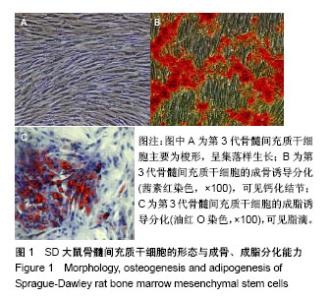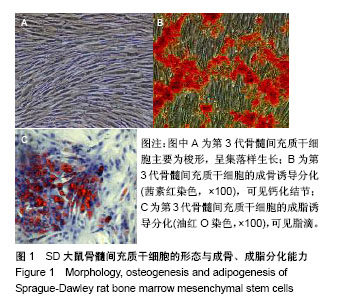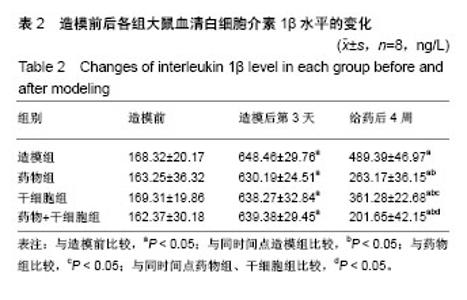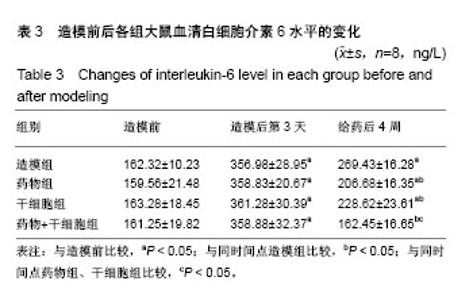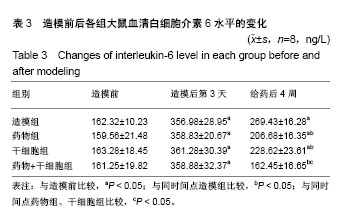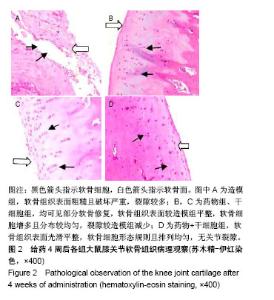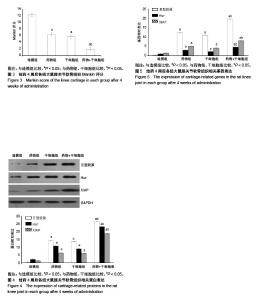| [1] 张中原,余丽梅,王信. 膝骨关节炎再生修复治疗新方法研究进展[J].实用医学杂志, 2018,34(9):1561-1564.[2] Glyn-Jones S, Palmer AJ, Agricola R, et al. Osteoarthritis. Lancet. 2015;386(9991):376-387.[3] 张钟元,江和训,赵锦伟,等.关节镜清理联合自体骨髓间充质干细胞移植治疗膝骨关节炎疗效观察[J].风湿病与关节炎, 2018,7(6):39-42.[4] 张春琪.自体骨髓间充质干细胞治疗早期膝骨性关节炎的临床研究[D].郑州:河南中医药大学,2015.[5] 孟庆阳,张玉可,孟繁琪. 锁定钢板植骨内固定配合中药治疗胫骨中下段骨折不愈合[J].河南科技大学学报(医学版), 2018,36(1):37-39.[6] 王在凤. 补肾活血中药治疗骨质增生继发性腰痛的效果及对患者骨硬化素蛋白水平的影响[J].中国当代医药,2018,25(8):158-160.[7] 干群.补肾活血中药治疗骨质增生继发性腰痛疗效及对DKK1、SOST水平的影响[J].全科医学临床与教育, 2017,15(4):404-408.[8] 潘建科,郭柏铭,刘军,等. 龙鳖胶囊对骨髓间充质干细胞增殖活性的影响[J].中国组织工程研究,2015,19(28):4439-4444.[9] 杨帆,袁芳,侯秀娟,等.补肾通络方对大鼠膝骨关节炎膝关节软骨细胞外基质代谢的影响[J].吉林中医药,2018,38(1):67-71.[10] Chen X, Yan J, He F, et al. Mechanical stretch induces antioxidant responses and osteogenic differentiation in human mesenchymal stem cells through activation of the AMPK-SIRT1 signaling pathway.Free Radic Biol Med. 2018;126:187-201.[11] Han GE, Kang HT, Chung S, et al. Novel neohesperidin dihydrochalcone analogue inhibits adipogenic differentiation of human adipose-derived stem cells through the nrf2 pathway. Int J Mol Sci. 2018;19(8): E2215.[12] 李永津,林涌鹏,侯宇,等.龙鳖胶囊与骨髓间充质干细胞移植对膝骨关节炎大鼠软骨修复作用的比较研究[J].广州中医药大学学报, 2018,35(1): 123-128.[13] 安玉芳,李义,崔立建,等.乌头注射液关节腔注射对膝骨关节炎模型兔关节液IL-1β、IL-18、NF-κB p65的影响[J].中国中医药科技, 2017,24(6): 736-738.[14] 袁颖超,廖秋菊. 炎性细胞因子与膝骨关节炎诊断及治疗的最新研究进展[J].药学实践杂志,2018,36(1):9-12.[15] 任海亮,马剑雄,马信龙. 膝骨关节炎时关节滑液中炎症相关物质的表达[J].中国组织工程研究,2015,19(15):2336-2340.[16] 郑卫军,宋祖权,孙红桥. 血清IL-1β和IL-6表达水平与膝骨关节炎病程关系的研究[J].临床外科杂志,2011,19(7):490-492.[17] 窦浚峰,海国栋,封青川,等.尼古丁对白细胞介素-1β诱导的软骨细胞炎性反应及核因子-κB信号通路的影响[J].中华实验外科杂志, 2018,35(5): 885-887.[18] 程晓平,林炜,陈兆榕. 独活寄生汤含药血清抑制IL-1β诱导的软骨细胞炎症反应的机制研究[J].风湿病与关节炎,2017,6(4):5-8.[19] 李菁,赵岩. 白细胞介素6及其受体拮抗剂在类风湿关节炎发病机制及治疗中的作用[J].中华医学杂志,2014,94(39):3114-3116.[20] 潘建科,罗斌,郭达,等.龙鳖胶囊对膝骨关节炎大鼠IL-1β、IL-6、IL-10水平的影响[J].中华中医药杂志,2015,30(5):1675-1679.[21] 刘康妍,凌龙,胡海澜. 骨关节炎的退变进程及其诊断分期[J].中华关节外科杂志(电子版),2017,11(4):442-445.[22] 王舒婷,陈志煌,侯春福,等.经筋微创松解疗法对膝骨关节炎兔软骨细胞凋亡的抑制作用及机制[J].山东医药,2017,57(21):30-32.[23] Sun J, Wei X, Wang Z, et al. Inflammatory milieu cultivated Sema3A signaling promotes chondrocyte apoptosis in knee osteoarthritis.J Cell Biochem. 2018;119(3):2891-2899.[24] Jiang X, Yin L, Zhang N, et al. Bisphenol A induced male germ cell apoptosis via IFNβ-XAF1-XIAP pathway in adult mice. Toxicol Appl Pharmacol. 2018;355:247-256.[25] 周俊,单慧蓉,王小龙,等.CDK4/6对急性白血病细胞增殖及凋亡的影响[J].江苏医药,2017,43(17):1209-1212.[26] Zhang X, Zou T, Rao JN, et al. Stabilization of XIAP mRNA through the RNA binding protein HuR regulated by cellular polyamines.Nucleic Acids Res. 2009;37(22):7623-7637.[27] Alcaraz MJ, Megías J, García-Arnandis I, et al. New molecular targets for the treatment of osteoarthritis. Biochem Pharmacol. 2010;80(1):13-21.[28] 贾博,林福庆. 膝骨关节炎关节镜下病变特征与血清CTX-Ⅱ和COMP水平的相关性[J].临床骨科杂志,2018,21(2):185-189. |
